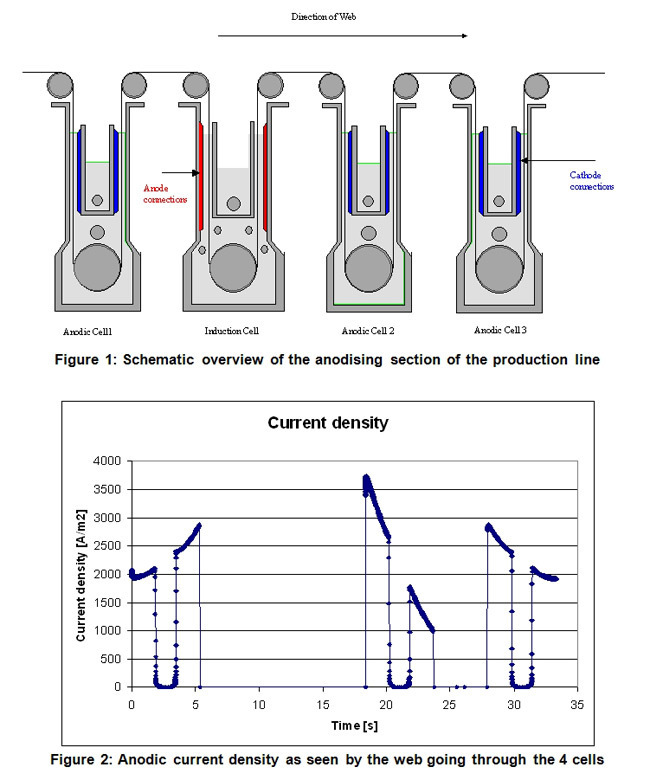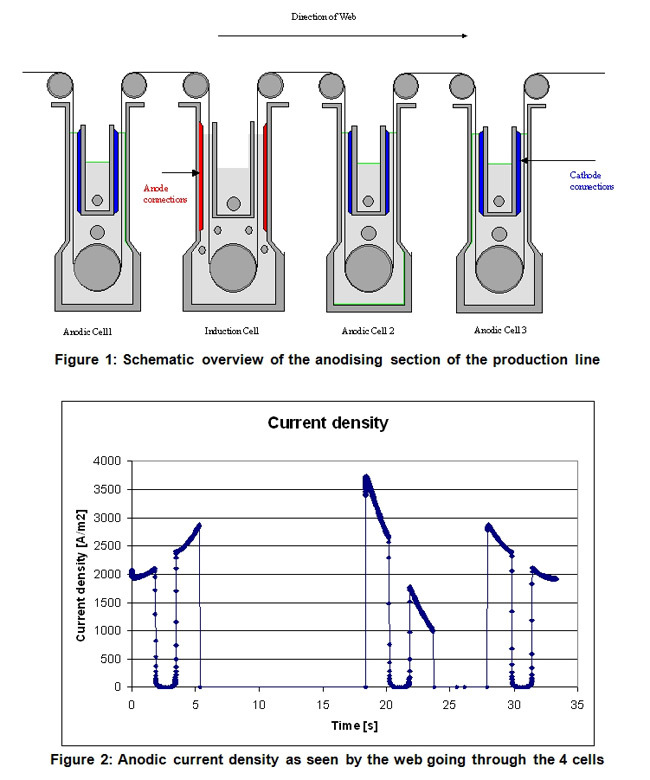
Continuous anodizing of aluminum foil
Assessing the capabilities of process simulation software to predict the standard working conditions of the different anodizing configurations

Overview
The first step of the project is to assess the capabilities of process simulation software to predict the standard working conditions of the different anodizing configurations (both horizontal and vertical) by comparing the calculated results with measurements and macroscopic process conditions.
Also, a sensitivity analysis is performed to quantify the interactions between the electrolyte flow, the electrical potential, the current density, the web thickness, the web speed, and the temperature distributions in the reactor. This includes a parameter study to investigate the influence of the different process parameters (flow rate, web velocity, web thickness, total current,…) on the local conditions (current density, temperature, and overpotential) of the anodizing process.
Highlights
The project clearly demonstrates the possibilities of the present state-of-the-art modeling on industry-scale anodizing reactors. In the second step, the optimization with respect to quality control and a higher web speed for the different production lines is investigated and implemented successfully at the different production sites.

Outcomes
Based on an extensive validation study, a very good quantitative agreement between all macroscopic parameters like the potential of the rectifier and temperature increase in the electrolyte has been established. The simulations increase significantly the insight in the behaviour and the most critical parameters of the process and open the way to better process control and faster throughput.
